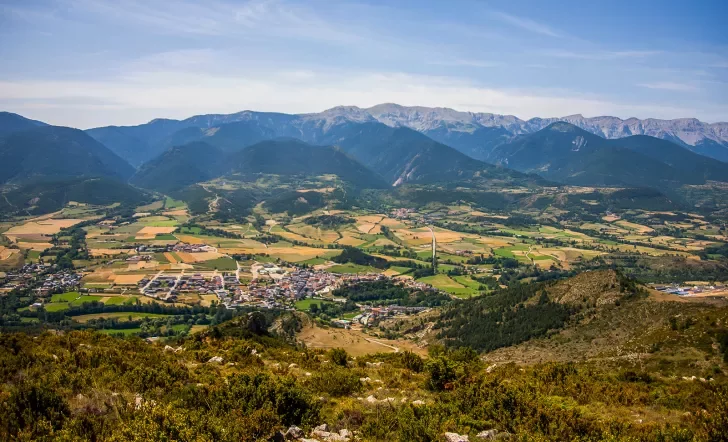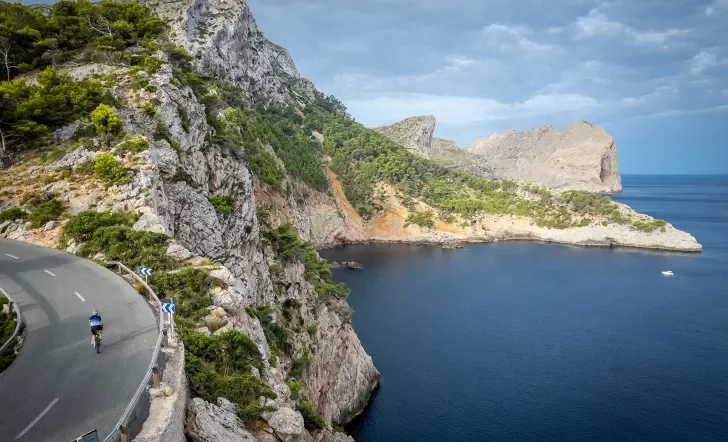Prowling for tapas in Madrid, beach-hopping in the Balearic Islands, trekking the legendary Camino de Santiago and clapping along to flamenco in Granada. With so much to see and to do in Spain, you might not even know where to start! That’s why it pays to know the best time to visit this varied, vibrant nation. Whether you want to party with the famously laid-back locals, to soak up the bright Mediterranean sun or even to try your luck at running with the bulls, there’s a right season for everything—and no wrong season to go.

Weather in Spain
(All temperatures quoted are in Fahrenheit.)
Spring
Spring in Spain starts off chilly but warms up quickly, hitting the mid-60s by April and the 70s by May. Most of the country is quite lovely during this time of year, but the nights are still cold, and a rain shower or two isn’t out of the question.
Summer
Much of Spain gets quite hot in July and August. If you visit the country’s interior during this time, stay hydrated, and avoid going out in the middle of the day. The beaches are more pleasant, of course, but be prepared to fight crowds.
Fall
September is still summery, with the heat just a bit less oppressive than in August. By October, though, temperatures have dropped back down to the 60s and 70s, and you can comfortably go for long walks in the sun—or a swim in the ocean on the southern coast. November is more overcast and far less predictable, but temperatures still hover around the 50s.
Winter
Spanish winters are usually mild, which isn’t to say you should pack a swimsuit (unless you’re headed to the Canary Islands). Expect highs in the 50s and lows in the 30s, with the occasional dip below freezing.
Spain is a big country, and the weather can vary greatly from place to place. Here’s what to look out for in individual regions:
North
As a rule, northern Spain is chillier and rainier than the rest of the country. In fact, it’s a foggy maritime climate that can resemble San Francisco’s weather patterns. The mountains here get a fair amount of snowfall in winter.
Central
Madrid and its surroundings are high altitude, sunny and dry, making for scorching summers and freezing winters. Bring a jacket for the evenings, even on toasty days.
East
The area around Barcelona is warm and humid, so expect some fog in spring and sauna-like conditions in summer. Winters are quite mild, with temperatures reliably above freezing.
South
Spain’s warmest region is Andalusia, where the stereotypical Mediterranean climate prevails: long, hot, dry summers and short, mild, wet winters. The beaches aren’t quite warm enough for swimming in winter, but you can still hike, canoe and eat outside.
Backroads Pro Tip
Don’t assume it’ll be warm and sunny just because it’s Spain. Even summer can have a surprise overcast day or two, and nights are often far colder than many tourists expect. Bring a few extra layers, and read up on the particular weather patterns of the region where you’re headed.
Special Events
Spain’s wealth of cultural and religious traditions—and Spaniards’ love of a good fiesta—mean there’s bound to be something going on when you visit. These occasions draw the biggest crowds:
Three Kings’ Day (January 6)
Forget Christmas or New Year’s; January 6, aka Epiphany, is Spain’s big winter holiday. The bulk of festivities actually happen the evening before, when stand-ins for the Three Wise Men parade through Spanish cities, towns and villages and shower children (and quite a few freeloading adults) with candy.
Las Falles (March 15–19)
This riotous springtime tradition could be called Valencia’s version of Burning Man. Local craftsmen spend practically the whole year designing and building ninots (giant puppets or statues) that depict everyone from medieval figures to celebrities to cartoon characters. They’re displayed for five days and then set ablaze—with the exception of the most popular one, which is “pardoned” and sent to a local museum. The town triples in size during the fest, so book your accommodations early.
Holy Week (April)
In the week leading up to Easter, religious parades and processions take over every town in Spain. Some are joyous, and others are deadly somber, but you’ll find the most over-the-top celebrations in the Andalusian cities of Seville and Malaga, which offer elaborate floats and spontaneous outbursts of flamenco. Just don’t freak out at the KKK-like hoods; they’re actually a nod to ancient Roman Catholic tradition.
San Fermin Festival (July 6–14)
Think you’ve never heard of this festival? Guess again because you probably know its signature event: the running of the bulls. Every morning for a week in July, six bulls are encouraged to stampede through the streets of Pamplona, and hordes of humans wearing white outfits and red scarves accompany them. Other events include fireworks displays, parades, sports competitions and, yes, bullfighting. If you want to get your Hemingway on, prepare for huge crowds and extortionate hotel prices.
La Tomatina (August)
On the last Wednesday of every August, the little town of Buñol hosts the world’s biggest food fight. It’s a saucy free-for-all in which 20,000 participants hurl overripe tomatoes at each other. Tickets for the hour-long melee are €10 and sell out in a flash. If you’re one of the lucky participants, bring a pair of goggles!
Crowds
Like most of Europe, Spain draws big crowds in summer; Barcelona is even starting to put up some resistance toward Airbnb. A lot of locals take vacations in August, so you’ll be able to walk around cities more easily then, but it’ll likely be be quite hot then. If you don’t mind skipping the beach, winter, with its bearable temperatures and practically nonexistent lines, is a great time to visit. If the beach is your reason for going, try the Costa del Sol between March and May.
Backroads Pro Tip
Wondering where all the locals are in summer? They’re either on holiday themselves, or they’re waiting until after dark to venture out. Remember, this is Spain, where shops are closed in the afternoons and 9:00 p.m. is an “early dinner.” Adjust your schedule accordingly, and you’ll have an easier time dealing with the heat.
Adventure
Biking
With less punishing temperatures and little chance of rain, September and October make for ideal months for cycling trips. Biking in summer can get sweaty, but if you head up to the mountains or near the coasts—to the Pyrenees, Basque Country, Mallorca and elsewhere – there’ll be enough breeze to keep you feeling motivated.
Hiking and Walking
Spring and fall are both great seasons for hiking in Spain. In addition to the cooler weather, you’re likely to see some colorful wildflowers or local wildlife. Summer hiking can be manageable as well, though, especially in the northern mountains. Just get an early start, and pack lots of water.
Boating and Rafting
The Spanish Mediterranean gets choked with boats in summer; if you’re set on a sailing or motorboat excursion, it’s better to plan for spring or fall. On the other hand, July and August are good times for rafting on the excellent white water in the Spanish Pyrenees.
Bullfighting
The number of bullfights in Spain has been dropping in recent years, but there are still plenty of opportunities for you to witness this proud and barbaric tradition from the sidelines. The season is roughly from April to September, peaking with July’s San Fermin Festival (see above).
Travel to Spain with Backroads
Backroads offers numerous ways to experience the very best of Spain on our award-winning active travel adventures. Explore this country in the best and most genuine way possible—away from the crowds, buses and tourist hot spots. We hope you'll join us! Check out our full list of Spain adventures here.
Want to learn more about Spain, including its history, travel tips, highlights and insider info?
Check out our full Spain Travel Guide!





